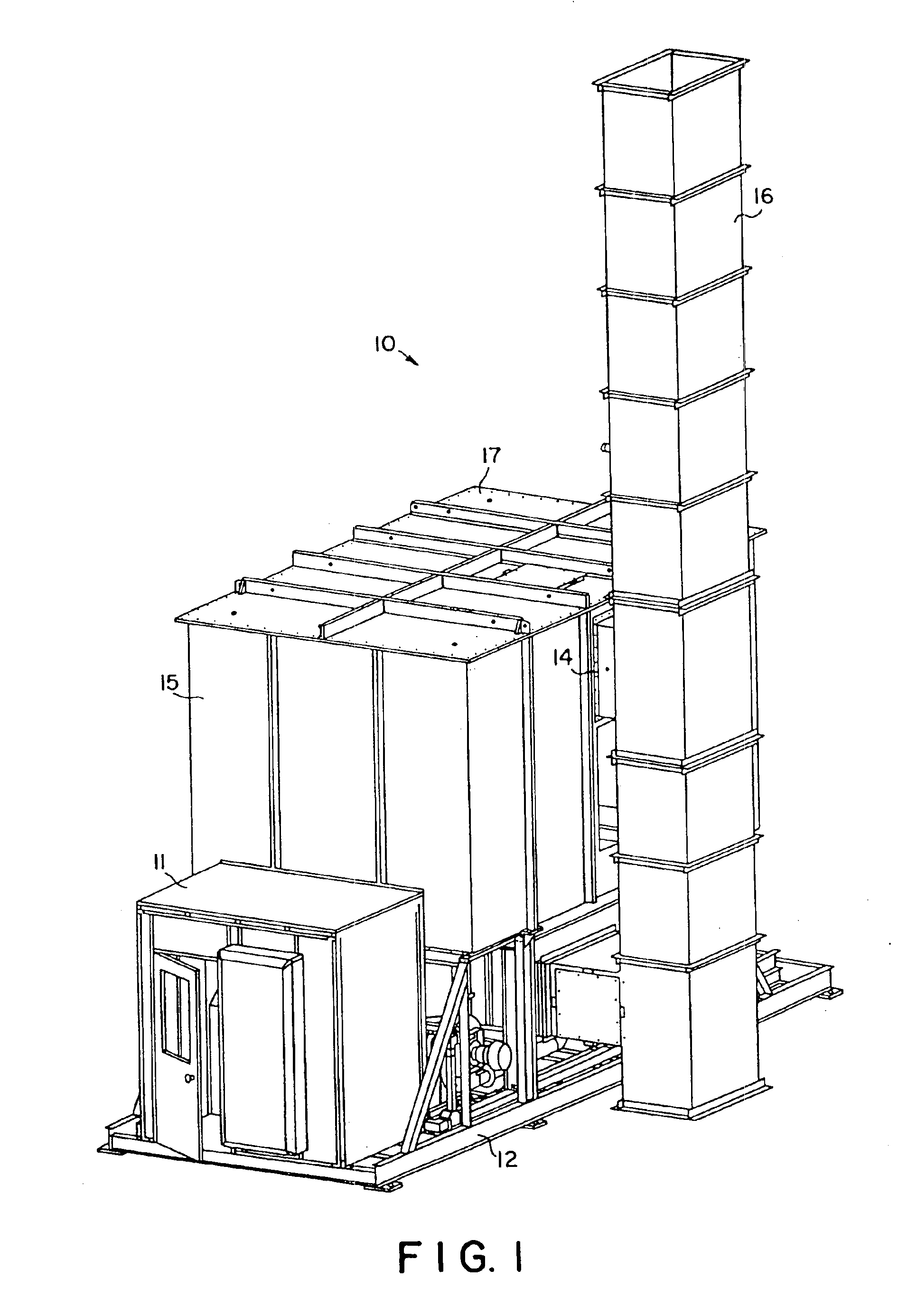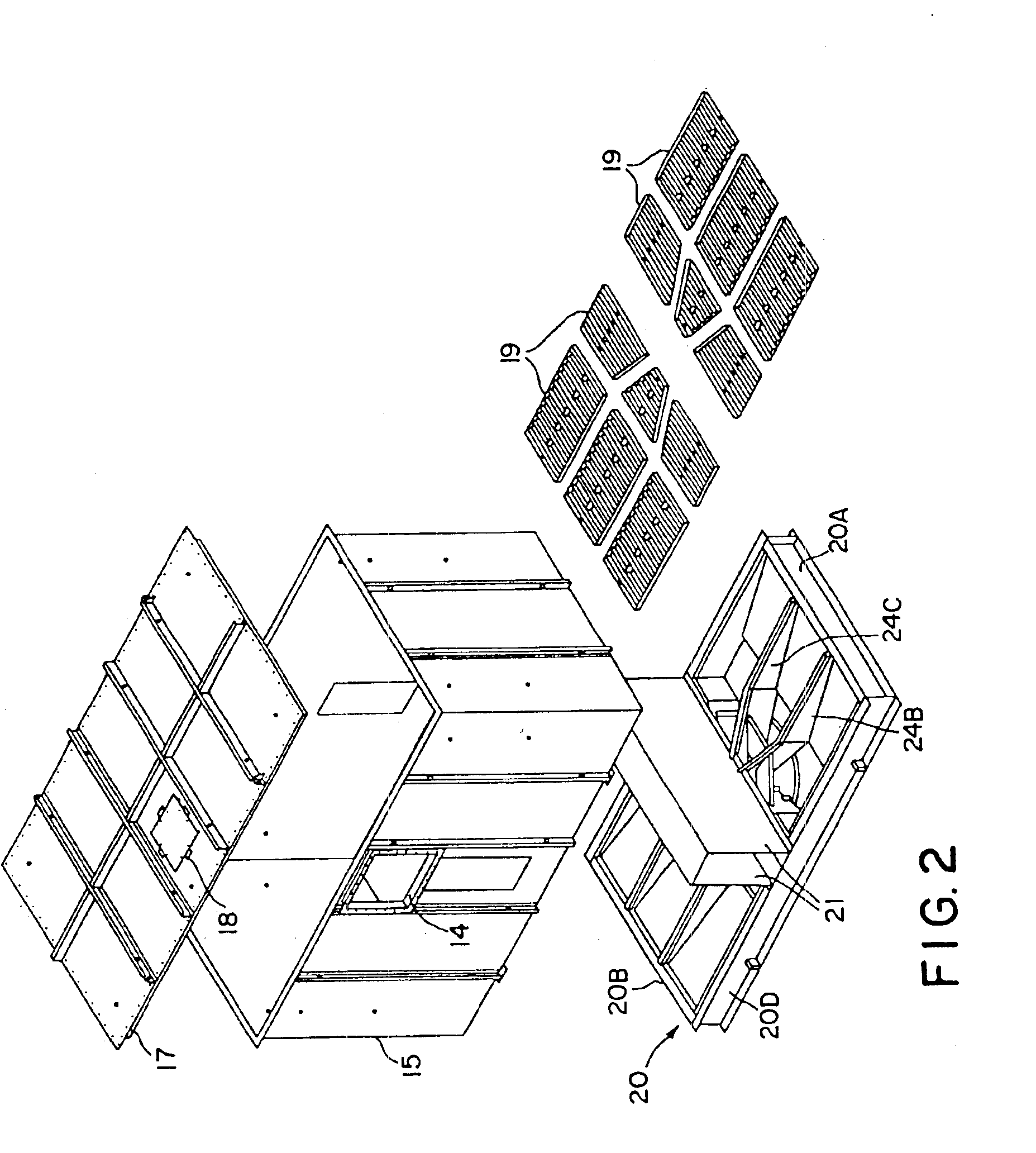Switching valve seal
a technology of switching valve and sealing valve, which is applied in the direction of lighting and heating apparatus, combustion types, furnaces, etc., can solve the problems of valve wear, disturbance and fluctuation of pressure and/or flow in the system, and reduce the efficiency of the apparatus, so as to improve the sealing effect, minimize wear, and improve the sealing
- Summary
- Abstract
- Description
- Claims
- Application Information
AI Technical Summary
Benefits of technology
Problems solved by technology
Method used
Image
Examples
Embodiment Construction
[0038]Turning first to FIGS. 1 and 2, there is shown a two-chamber regenerative thermal oxidizer 10 (catalytic or noncatalytic) supported on a frame 12 as shown. The oxidizer 10 includes a housing 15 in which there are first and second heat exchanger chambers in communication with a centrally located combustion zone. A burner (not shown) may be associated with the combustion zone, and a combustion blower may be supported on the frame 12 to supply combustion air to the burner. The combustion zone includes a bypass outlet 14 in fluid communication with exhaust stack 16 typically leading to atmosphere. A control cabinet 11 houses the controls for the apparatus and is also preferably located on frame 12. Opposite control cabinet 11 is a fan (not shown) supported on frame 12 for driving the process gas into the oxidizer 10. Housing 15 includes a top chamber or roof 17 having one or more access doors 18 providing operator access into the housing 15. Those skilled in the art will appreciat...
PUM
 Login to View More
Login to View More Abstract
Description
Claims
Application Information
 Login to View More
Login to View More - R&D
- Intellectual Property
- Life Sciences
- Materials
- Tech Scout
- Unparalleled Data Quality
- Higher Quality Content
- 60% Fewer Hallucinations
Browse by: Latest US Patents, China's latest patents, Technical Efficacy Thesaurus, Application Domain, Technology Topic, Popular Technical Reports.
© 2025 PatSnap. All rights reserved.Legal|Privacy policy|Modern Slavery Act Transparency Statement|Sitemap|About US| Contact US: help@patsnap.com



